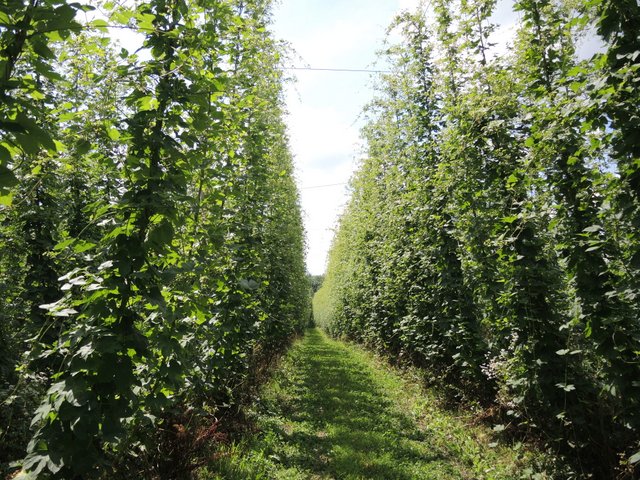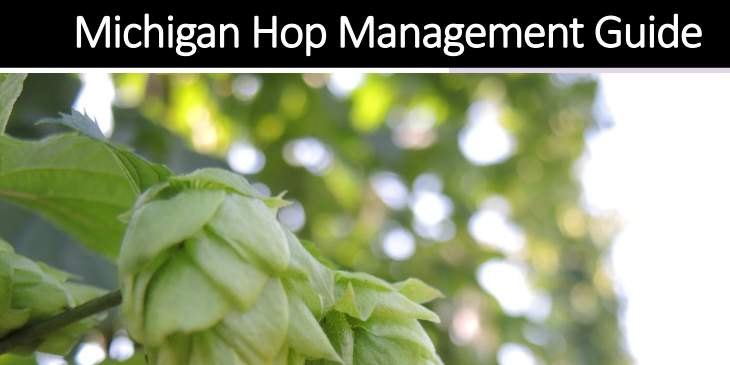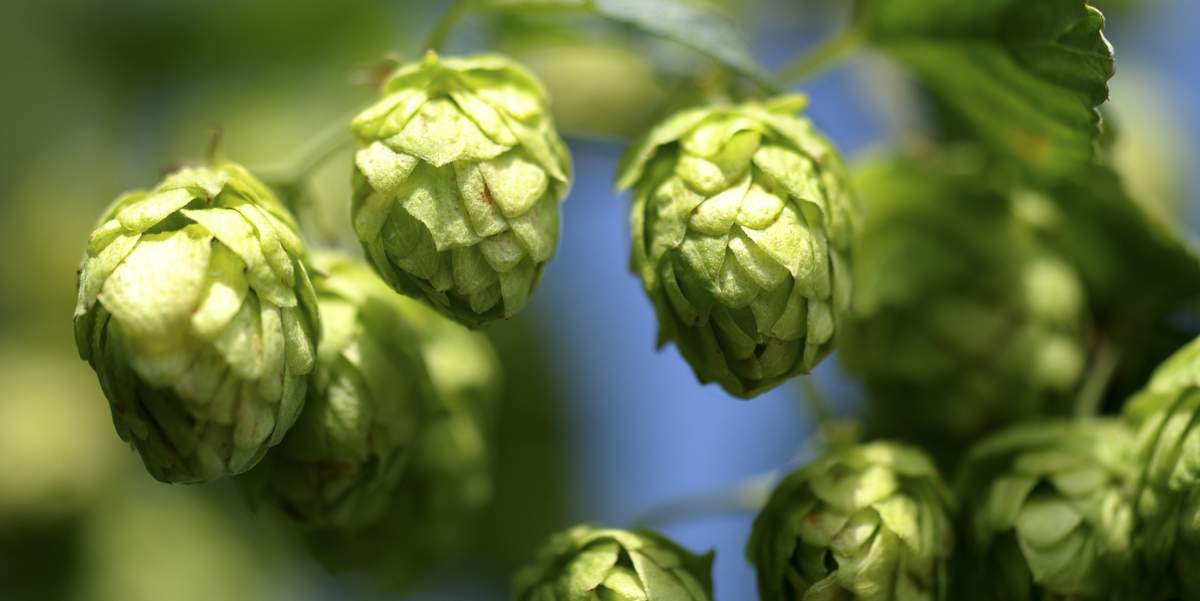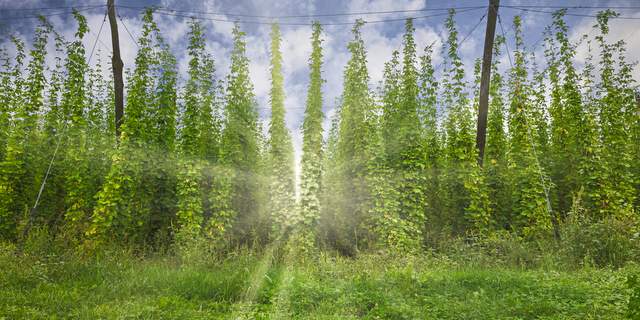
In the United States, most hops today are grown in the Pacific Northwest. In fact, production for Idaho, Oregon and Washington (the top three states) in 2019 totaled a record high 112 million lbs, up 5 percent from 2018, according to our previous post. But the localization of the craft beverage movement has created a growing trend for regional ingredients that individualize and help sell local products. We’ve seen it in malt (Ohio’s Origin Malt), yeast (dig Today’s Weird Yeast Strain column), water (Maine’s Sebago Lake watershed) and hops (continue reading).
Michigan State University Extension is a thought leader for Great Lakes region ag commodities from corn to soybeans to hops. For the latter, the university works with the Great Lakes Hop Working Group, formed in 2016 to provide region-specific pest management support to producers in remerging hop production outside of the Pacific Northwest and support sustainable hop production in the Great Lakes region. The working group members hail from public universities and government entities spanning from Virginia to Guelph to Nebraska. Together, the two organizations have created the Hop Production in Midwest and Eastern North America course— an on-demand online course that is now available — and here’s that free 46-minute module we promised .
“Outside the Pacific Northwest, Michigan is the largest producer of hops in the United States,” explained Erin Lizotta, IPM educator at MSU Extension. “Michigan State University has been a leader in helping the nascent hop industry, and we are well positioned to do so as regionally much of the emerging hop acreage is within the Great Lakes region and historically the university is adept at working with small specialty crop producers in a highly diverse agricultural state. Combining our efforts with colleagues from across the Midwest and Northeast, we are better able to serve the needs of this emerging industry with limited resources.”
In the United States, Michigan specifically is the biggest region outside of the Pacific Northwest for growing hops. There are now more than 1,000 acres of hops and 50 farms across the state. To put that in perspective, Washington (the largest hop growing state) had over 40,000 harvested acres of hops in 2019. Yet since 2007, that increasing Michigan acreage has made hops the fastest-growing agricultural commodity in the state, which resides nicely between that 40- and 50-degrees latitude where most commercial hop production takes place.

That state is ideal for hop production with its geography (well drained, deep, sandy loam soils with a pH around 6.5), long days and short nights during the growing season and winter temperatures below 40 degrees F for one to two months. To assist prospective hop producers in understanding the challenges and complexity of hop production in Michigan, the Great Lakes Hop Working Group has developed a comprehensive introductory course focused on production in reemerging regions including the Northern Plains, Great Lakes and Northeast.
This course details all aspects of hop production from economic considerations to postharvest handling. It was developed for beginner or prospective hop producers but could also be utilized by more experienced hop growers. As mentioned above, you can preview the first course module, an industry overview by Rob Sirrine with Michigan State University Extension, right here.
“There are many opportunities and challenges when considering a new ag venture, and risk is inherent across the ag world in today’s financial climate,” said Lizotta. “This course will help you better understand the big picture of hop production, as well as the practical, applied nature of daily practices on the farm.”
To learn more, visit Michigan State University Extension’s hops page. It’s full of great info besides this new course — everything from building hop trellis systems to learning how to budget for hop production. Also consider attending the upcoming Great Lakes Hop and Barley Conference this March to learn from today’s most innovative growers and cutting-edge researchers.

Additional course content for Hop Production in Midwest and Eastern North America includes:
- Hopyard construction
- Cost of production
- Stages of production
- Horticultural practices
- Disease management
- Insect management
- Weed management
- Beneficial insects
- Pesticide considerations
- Harvest
- Postharvest
- Marketing
The cost to register is $50 and includes all course content. Pesticide recertification credits are available for Michigan applicators. A certificate of completion is available upon completion of all course work.





Leave a Reply
You must be logged in to post a comment.